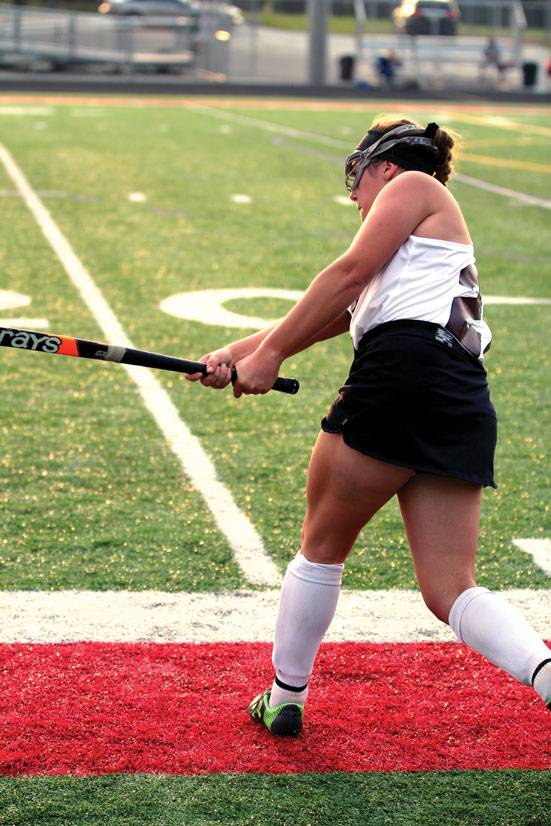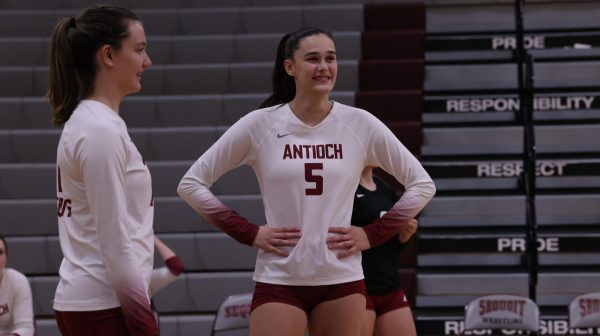Meeting a Happy Medium
There is always something a coach can fix to help themselves and their team improve for the future.
More stories from Karley Rogalski
Even if a student is not involved in a sport, they can still name a coach that never stops pressuring their team to work harder. The coach that is constantly pushing their team over their limits to the point where everyone on the team wants to quit. On the other hand, students can also name a coach that does not do much for their team, even when they are constantly losing against everyone they play. A coach that is okay with everything as long as they are getting a paycheck at the end of the day. Every athlete prefers a different type of coach that suits the way they want to learn, but it is best for everyone on the team when the coach reaches a happy medium that allows everyone to be comfortable and learn new skills at their own pace.
The term “laid back coaching style” does not have to be applied solely to coaches that are relaxed to the point where they do not care for their team. It can also apply to coaches that let their team learn on their own or work with other teammates to get better. This style of coaching can help the athletes work together, along with allowing the coach to work with the athletes individually so that each member of the team can have a chance to work on improving their own personal skills.
During practice, I primarily play with my team and talk to them to see what they are thinking for different shots,” varsity golf coach Andrew Benton said. “Everybody needs to work on different things. Especially in golf, we don’t have to run the same offense or same defense. Maybe someone needs to work on chipping and someone else need to work on putting. If you’re a relaxed coach, that will allow you flexibility.”
Nonetheless, there are still negatives to a laid back coaching style that can shine through the positives. When a team is in the middle of a game and does not know what to do next, the effects of not practicing as hard as they should have start to take action. Since the team did not learn what to do in practice, they usually do not know what to do in a game and end up losing because the coach did not push them hard enough.
“I am constantly talking to the kids on the field as they are playing versus a laid back coach that would maybe not talk to the kids while they are on the field, and wait until they came off the field to talk to them,” varsity field hockey coach Terry Dewing said. “I think it benefits the kids as they are playing because in field hockey, they are on the field and can hear me so they can adjust and do what I need them to do while they are still out on the field.”
On the contrary, a strict approach to coaching can also not be good for a team. It can put extra pressure on the athletes and lead them down a path to do worse.
They are focused on the technical side of a sport and not the actual game, when it comes time to battle against another team. Also, strict coaching can turn athletes against each other and cause them to want to take their anger out on someone, which can unfortunately be people on their own team.
“I think kids feel like you’re sometimes pushing them too much,” wrestling coach Luke Karner said. “I think sometimes [coaches] can get so lost with that [coaching], that you end up not enjoying stuff that you should, like when you accomplish things or you do something really well, so you have to take the time to enjoy when things are good and make sure that you are enjoying yourself. Otherwise, what’s the point.”
However, there are positives to having a strict coaching style. The coaches can help the team stay focused and learn more in a shorter amount of time, and it can help the athletes stay motivated and want to continue getting better. Also, it allows the team to easily communicate with each other and understand what needs to happen in a variety of different situations.
“Pressure keeps kids motivated,” Karner said. “I think that, like in any activity, if you feel like you can do everything and you’re not pushed, you’re not really challenged so you’re not really trying. If there is a challenge in front of you and you’re trying to keep getting better or trying to reach another goal, then it’s always going to motivate you to work hard and that’s an important ethic to develop.”
The happy medium comes when a coach learns to balance discipline with the ability to have fun. A team needs to work hard to get better, but there are also times when having fun can help teams learn what they need to do as well. Some players tend to enjoy these coaches because as an athlete they are learning a new skill, and as a student they can have time to enjoy the sport that they love to play.
“You have to find that line between relaxed and strict,” Benton said. “There is somewhere, a little sweet spot, in the middle that’s different for each player too. So some players might do better with a more relaxed end of the spectrum while others might do better with a more strict end of the spectrum. You have to, as a coach, decide which one you need to pick.”
Whether an athlete needs a strict coach to work harder or a laid back coach to be able to have fun, everyone has their own opinion of the perfect coach. However, it comes down to who the coach is because each coach was taught in a different way. These different upbringings can change their personal perspective on what needs to happen to accomplish goals they have already set for the team.












